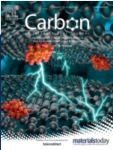
One of the leading topic at NanoBiomedical Centre are sensing devices based on novel nanomaterials such as metal oxides, two-dimensional transition metal carbides, silicon and carbon-based nanostructures.
Gas sensing devices are employed in many applications such as detection of toxic and combustible gases, monitoring emissions from vehicles and other combustion processes, breath analysis for medical diagnosis, and quality control in the chemicals, food and cosmetics industries.
The miniaturization trend requires development of novel technologies applying new nanomaterials. Moreover, still several challenges remain related to optimization of sensor sensitivity, selectivity, speed of response and stability.
The operation mechanism of such devices can vary accordingly to analyzed compound. Currently, three different task groups are independently working on development of different sensing devices such as: optical gas sensor, chemo-resistive gas sensor and biosensor.
In case of optical gas sensors, we have explored for the first time the ability of a three-dimensional polyacrylonitrile/ZnO material-prepared by a combination of electrospinning and atomic layer deposition (ALD) as a new material with a large surface area - to enhance the performance of optical sensors for volatile organic compound (VOC) detection.
Along with co-workers from Gdańsk University of Technology, we are working on resistive gas sensors based on two-dimensional structures, namely, graphene oxide, reduced graphene oxide, multiwalled carbon nanotubes and for the first time - MXenes.
A novel concept of Au/PSi nanocomposites produced by chemical and electrochemical methods has been proposed for optical biosensor detection. This biosensor was applied to detect aflatoxin B1(AFB1) - one of the most dangerous from the aflatoxins, which has a range of toxic effects.


